Did you know that the Pristella Tetra, also known as the X-ray Tetra, is a small fish with a remarkable ability to light up a community aquarium? Its vibrant colors and peaceful temperament make it a popular choice among fishkeepers around the world.
In this comprehensive guide, I will take you through everything you need to know about caring for the Pristella Tetra, including its appearance, behavior, and the ideal setup for its aquarium. From understanding its unique characteristics to creating the perfect environment, you’ll become a skilled caretaker for this stunning species.
Table of Contents
Key Takeaways:
- The Pristella Tetra, also known as the X-ray Tetra, is a colorful and peaceful fish that adds beauty and liveliness to a community aquarium.
- Both male and female Pristella Tetras display vibrant yellow, black, and red markings, making them a visually stunning addition to any tank.
- These fish are active swimmers and thrive when kept in groups, showcasing their mesmerizing shoaling behavior.
- Pristella Tetras are compatible with other peaceful fish and can be kept in a variety of community tank setups.
- Creating a well-maintained aquarium with suitable water parameters is essential for the health and well-being of these fish.
Appearance and Behavior of the Pristella Tetra
The Pristella Tetra is a small fish known for its stunning appearance and peaceful nature. Its distinctive coloring adds a vibrant touch to any aquarium. Both male and female Pristella Tetras display a combination of yellow, black, and red markings, creating a visually striking appearance.
These captivating fish have a calm and gentle temperament, making them an ideal choice for community tanks. They are known for their peaceful behavior and get along well with other non-aggressive species. Pristella Tetras are sociable by nature and enjoy swimming together in groups, creating a mesmerizing display of synchronized movement.
The Pristella Tetra is an active swimmer, constantly exploring its environment. With their small size and graceful movements, they bring a sense of liveliness and energy to any aquarium. Their shoaling behavior is particularly fascinating to observe as they move in unison, forming beautiful patterns within the tank.
Pristella Tetra Appearance Features
| Feature | Description |
|---|---|
| Coloring | A vibrant combination of yellow, black, and red markings |
| Size | Small fish, typically reaching a size of 1.5 to 2 inches |
| Temperament | Peaceful and gentle |
| Behavior | Active swimmers that enjoy shoaling in groups |
Pristella Tetra vs X-ray Tetra: Clarifying the Names
When it comes to the Pristella Tetra and the X-ray Tetra, there may be some confusion regarding their names. However, it’s important to note that these two names actually refer to the same species of fish. The Pristella Tetra is a common name used to describe this species, while its scientific name is Pristella maxillaris.
By clarifying this distinction, we can eliminate any potential misunderstandings among fishkeepers. Whether you refer to them as the Pristella Tetra or the X-ray Tetra, you are talking about the same fish with its unique characteristics and care requirements.
Below is a quick overview of the Pristella Tetra (or X-ray Tetra):
| Pristella Tetra (X-ray Tetra) | |
|---|---|
| Scientific Name | Pristella maxillaris |
| Origin | South America, specifically the Amazon River basin |
| Maximum Size | Around 1.5 to 2 inches |
| Coloration | A vibrant combination of yellow, black, and red markings |
| Behavior | Peaceful, active, and enjoys shoaling in groups |
| Compatibility | Can coexist peacefully with other peaceful tankmates |
| Tank Requirements | A well-maintained aquarium with suitable water parameters |
| Feeding | Accepts a variety of foods, including flakes and live/frozen options |
| Breeding | Breeds readily with proper conditions and care |
As you can see, regardless of whether you call them Pristella Tetras or X-ray Tetras, these fish possess the same captivating colors, peaceful temperament, and compatibility with other tankmates. Providing them with optimal care and a suitable tank setup will allow them to thrive and create a visually stunning display in any aquarium.
Size and Coloration of the Pristella Tetra
The Pristella Tetra, also known as X-ray Tetra, is a small fish that typically reaches a size of about 1.5 to 2 inches. Both males and females display vibrant colors, making them a stunning addition to any aquarium.
Their dorsal fin showcases a striking combination of yellow and black, creating a bold contrast that catches the eye. Additionally, the tail fin features a touch of red, adding a splash of color and elegance to their appearance.
This species’ beautiful coloration and small size make them a popular choice among fishkeeping enthusiasts. The vibrant hues of the Pristella Tetra can create a visually captivating and dynamic aquatic environment.
A Visual Feast: The Pristella Tetra’s Coloration
| Males | Females |
|---|---|
| Yellow and black dorsal fin | Yellow and black dorsal fin |
| Red-tipped tail fin | Red-tipped tail fin |
Both males and females of the Pristella Tetra possess the same vibrant colors, showcasing their beauty and elegance in the aquarium. The combination of yellow, black, and red makes them a delightful sight to behold, especially when swimming together in a group.
Temperament and Tank Compatibility of the Pristella Tetra
The Pristella Tetra is a peaceful and gentle fish known for its amiable temperament. It is a perfect addition to a community tank with other peaceful fish species. While occasional chasing behavior may occur, rest assured, it is harmless and does not result in fin nipping. These charming tetras are social creatures and enjoy the company of their own kind, as well as other compatible tankmates.
It is recommended to keep Pristella Tetras in groups of at least six individuals. This helps to maximize their well-being and allows them to showcase their natural schooling behavior, which is truly a sight to behold in any aquarium. When kept in larger numbers, these tetras feel more secure, reducing stress and promoting a harmonious atmosphere in the tank.
When selecting tankmates for Pristella Tetras, it is important to consider their compatibility to maintain a peaceful community tank. Here are some excellent tankmates to consider:
- Neon Tetras
- Cardinal Tetras
- Harlequin Rasboras
- Guppies
- Platies
- Corydoras Catfish
- Otocinclus Catfish
These species share similar water parameter requirements and peaceful dispositions, making them ideal companions for the Pristella Tetra. Remember to avoid aggressive or fin-nipping species, as they can cause stress and harm to the Pristella Tetra.
| Tank Mate | Compatibility |
|---|---|
| Neon Tetra | Excellent |
| Cardinal Tetra | Excellent |
| Harlequin Rasbora | Good |
| Guppy | Good |
| Platy | Good |
| Corydoras Catfish | Excellent |
| Otocinclus Catfish | Excellent |
Tank Requirements for the Pristella Tetra
When setting up a tank for Pristella Tetras, it’s important to provide them with the right conditions to thrive. Here are the key tank requirements to ensure the well-being of your Pristella Tetras:
Water Parameters
Pristella Tetras prefer water that is kept within specific temperature, pH, and hardness ranges. Maintaining these parameters will help mimic their natural habitat and promote their overall health:
- Temperature: 74-80°F
- pH Range: 6-8
- Water Hardness: 4-12 degrees
Tank Size
Pristella Tetras are active swimmers and thrive in a spacious environment. Providing them with an adequately sized tank is essential for their well-being and to accommodate their natural schooling behavior. A 20-gallon tank or larger is recommended to ensure ample swimming space for a group of Pristella Tetras.
Image
Table: Suitable Tank Requirements for Pristella Tetras
| Tank Requirement | Recommended Range |
|---|---|
| Temperature | 74-80°F |
| pH | 6-8 |
| Water Hardness | 4-12 degrees |
| Tank Size | 20 gallons or larger |
Substrate and Decorations for the Pristella Tetra Tank
The Pristella Tetra is not demanding when it comes to substrate and decorations. The substrate can be sand or gravel, depending on the preferences of other fish species in the tank. Decorations such as rocks, driftwood, and plants can be added to enhance the aesthetics and provide hiding spots, but it’s important to maintain sufficient open swimming areas.
When choosing substrate for your Pristella Tetra tank, consider the needs of other fish species as well. If you have bottom-dwelling fish, such as Corydoras catfish or Kuhli loaches, a sandy substrate would be ideal. It mimics their natural habitat and helps prevent injury to their delicate barbels.
On the other hand, if you plan to keep fish like African cichlids or angelfish that prefer a rocky environment, gravel may be a better choice. It provides stability for plants and creates hiding spots for smaller fish.
Remember to rinse the substrate thoroughly before adding it to the tank to remove any dust or debris that could cloud the water.
When it comes to decorations, rocks, driftwood, and plants are great additions to a Pristella Tetra tank. Rocks can provide hiding places and create interesting focal points in the aquarium. Driftwood not only adds a natural aesthetic but also serves as a surface for beneficial biofilm growth, which can be a food source for the fish.
Live plants, such as Java fern, Anubias, or Amazon sword, offer several benefits for the Pristella Tetra tank. They provide cover, reduce stress, and help maintain water quality by absorbing excess nitrates. Additionally, plants can enhance the coloration and overall well-being of the fish.
| Substrate and Decorations for the Pristella Tetra Tank | Description |
|---|---|
| Substrate |
|
| Decorations |
|
Adding appropriate substrate and decorations to your Pristella Tetra tank not only enhances the visual appeal but also creates a more natural and stimulating environment for the fish. Remember to balance aesthetics with the need for open swimming areas to accommodate their active nature. With a well-planned setup, you can create a beautiful and thriving aquatic habitat for your Pristella Tetras.
Feeding and Care of the Pristella Tetra
The Pristella Tetra is a relatively easy fish to feed and care for, making it a popular choice among aquarium enthusiasts. Providing them with a balanced diet and maintaining good water quality are key factors in ensuring the health and vibrancy of these beautiful fish.
Feeding the Pristella Tetra
The Pristella Tetra is an omnivorous fish that accepts a variety of foods. Their diet can consist of:
- Flake foods
- Micro pellets
- Live or frozen foods such as brine shrimp and bloodworms
It is important to offer a varied diet to provide essential nutrients and mimic their natural feeding habits. Feeding them twice a day with an amount they can consume within a few minutes is recommended.
Caring for the Pristella Tetra
In addition to proper feeding, caring for the Pristella Tetra involves maintaining good water quality. Regular monitoring of water parameters such as temperature, pH, and water hardness is essential.
Here are some care tips for the Pristella Tetra:
- Keep the water temperature between 74-80°F to ensure their optimal health.
- Maintain a pH level within the range of 6-8 to ensure a suitable aquatic environment.
- Provide a well-maintained aquarium with proper filtration and regular water changes to keep the water clean and free from toxins.
By following these feeding and care guidelines, you can provide the Pristella Tetra with a healthy and thriving environment.
Breeding Considerations for the Pristella Tetra
The Pristella Tetra is a species that readily breeds in a well-maintained community aquarium. To promote successful breeding and ensure the continued presence of these beautiful fish in your tank, there are several important considerations to keep in mind.
Optimal Breeding Conditions:
Creating the ideal environment for breeding is crucial. Providing a balanced diet that includes live or frozen foods, such as brine shrimp or bloodworms, can enhance the reproductive capabilities of the Pristella Tetra. Additionally, maintaining a water temperature in the upper 70s (°F) and a pH level around 6.5 to 7 can significantly improve breeding success.
Egg Scattering and Hatching:
During the breeding process, the female Pristella Tetra scatters her eggs throughout the tank. These eggs are typically small and transparent. They are adhesive and often cling to plants or decorations. Within one to three days, the eggs will hatch, and you will observe the emergence of fry.
Feeding the Fry:
Once the fry have hatched, it is crucial to provide them with specialized foods to support their growth and development. Infusoria, baby brine shrimp, or commercially available fry food are excellent options to nourish the young Pristella Tetra. Ensuring a continuous supply of appropriate food is essential to help the fry thrive.
By understanding and implementing these breeding considerations, you can increase the likelihood of successfully breeding the Pristella Tetra and enjoy the beauty of their fry in your aquarium.
Breeding Considerations for the Pristella Tetra:
| Optimal Breeding Conditions | Egg Scattering and Hatching | Feeding the Fry |
|---|---|---|
| Provide a balanced diet with live or frozen foods | Eggs are scattered throughout the tank and cling to plants or decorations | Feed specialized foods such as infusoria, baby brine shrimp, or commercially available fry food |
| Maintain a water temperature in the upper 70s (°F) | Eggs usually hatch within one to three days | Ensure a continuous supply of appropriate food for optimal growth |
| Keep pH levels around 6.5 to 7 |
Recommended Tankmates for the Pristella Tetra
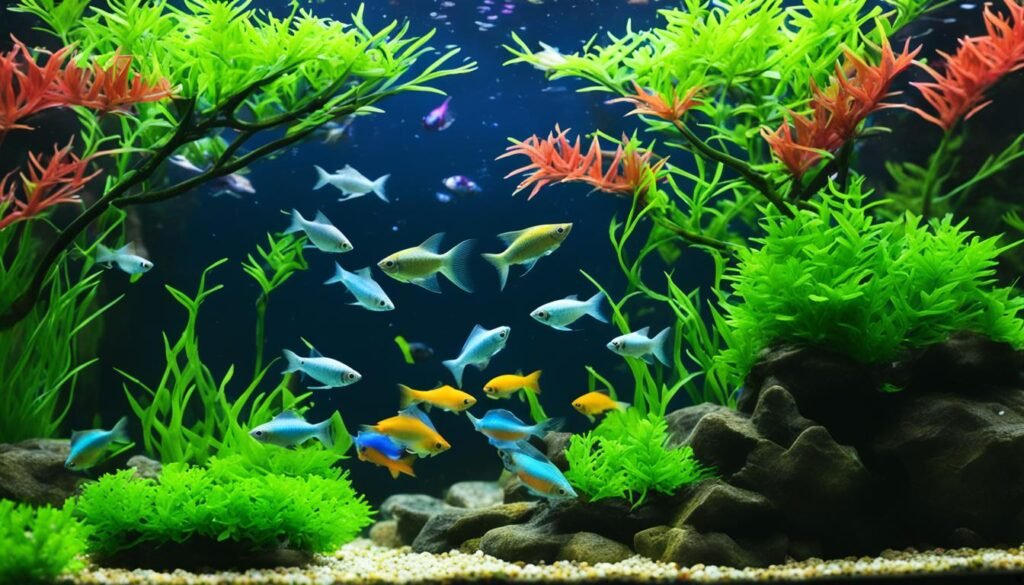
The Pristella Tetra is a peaceful fish that can coexist harmoniously with a variety of tankmates in a community setup. When selecting tankmates for your Pristella Tetra, it is crucial to consider factors such as size, temperament, and dietary needs to ensure a balanced and thriving aquarium ecosystem.
Here are some recommended tankmates for the Pristella Tetra:
- Other Tetras: Species like Neon Tetras, Cardinal Tetras, and Ember Tetras make excellent companions for the Pristella Tetra. These tetras share similar water parameter requirements and peaceful temperaments, creating a stunning and cohesive display of tetra shoaling behavior.
- Dwarf Cichlids: Compatible dwarf cichlids such as Apistogramma and Mikrogeophagus (German Blue Ram) can thrive alongside Pristella Tetras. These small and colorful cichlids add an additional layer of beauty and diversity to the community tank.
- Barbs: Peaceful barb species like Cherry Barbs and Gold Barbs can be excellent companions for Pristella Tetras. These lively and active fish create a dynamic and energetic atmosphere in the aquarium.
- Bottom-Dwelling Fish: Corydoras catfish and Otocinclus catfish are ideal bottom-dwelling tankmates for the Pristella Tetra. These fish help maintain the cleanliness of the aquarium by scavenging for leftover food and algae.
When introducing new tankmates, it is essential to monitor their interactions closely. Always ensure that the tankmates are not aggressive, fin nippers, or territorial, as these behaviors can cause stress and potential harm to the Pristella Tetra.
By selecting compatible tankmates that share similar care requirements, you can create a vibrant and thriving community tank that showcases the beauty and peaceful nature of the Pristella Tetra.
Health Considerations for the Pristella Tetra
The Pristella Tetra is generally a hardy fish, but it can be susceptible to various common fish diseases. By understanding and addressing these health concerns, you can ensure the well-being of your Pristella Tetra. Some of the diseases that Pristella Tetras may be prone to include:
- Ich: a parasitic disease characterized by white spots on the fish’s body and fins.
- Fin Rot: a bacterial infection leading to the deterioration of the fish’s fins.
- Bacterial Infections: caused by harmful bacteria, resulting in ulcers, sores, or other visible signs of infection.
- Dropsy: a condition characterized by bloating due to kidney or liver issues.
- Swim Bladder Disease: a condition affecting the fish’s buoyancy, leading to difficulties in swimming.
Preventing these diseases and promoting the overall health of your Pristella Tetra requires proper care and attention. Here are some key considerations:
- Maintain good water quality by monitoring and maintaining appropriate temperature, pH levels, and water hardness.
- Provide a well-balanced diet that meets the nutritional needs of your Pristella Tetra.
- Regularly inspect your fish for any signs of illness or abnormalities, and take prompt action if necessary.
- Quarantine new fish before introducing them to your main tank to prevent the spread of diseases.
- Follow proper aquarium maintenance practices, including regular water changes and filter maintenance.
Taking these steps will help keep your Pristella Tetra healthy and thriving in your aquarium. By providing a clean and suitable environment, along with proper care and attention, you can minimize the risk of diseases and ensure the well-being of your beloved Pristella Tetras.
Conclusion
The Pristella Tetra, with its vibrant colors and peaceful nature, is an excellent choice for adding beauty and liveliness to any community aquarium. By providing them with proper care, a suitable tank setup, and compatible tankmates, you can ensure that these fish thrive and bring joy to your aquarium.
Remember to maintain optimal water parameters, such as a temperature of 74-80°F and a pH range of 6-8, to create a healthy environment for the Pristella Tetra. Additionally, keeping them in groups of at least six individuals will allow them to exhibit their natural schooling behavior, creating a mesmerizing display in your tank.
Following the guidelines outlined in this comprehensive guide will help you provide the best possible care for your Pristella Tetra. By doing so, you can look forward to a successful and enjoyable experience with these beautiful fish. So, why wait? Dive into the world of Pristella Tetras and create a thriving and vibrant community aquarium today.
FAQ
What is the Pristella Tetra?
The Pristella Tetra, also known as the X-ray Tetra, is a colorful and peaceful fish that adds beauty and liveliness to a community aquarium.
How big do Pristella Tetras get?
Pristella Tetras typically reach a size of about 1.5 to 2 inches.
What are the ideal tankmates for Pristella Tetras?
Pristella Tetras are compatible with other peaceful fish, such as other tetras, dwarf cichlids, barbs, and bottom-dwelling fish like Corydoras and Otocinclus catfish.
What are the ideal tank requirements for Pristella Tetras?
Pristella Tetras require a well-maintained aquarium with a temperature of 74-80°F, a pH range of 6-8, and water hardness within 4-12 degrees. An adequately sized tank, such as a 20-gallon tank, is recommended to provide ample swimming space.
How do I care for Pristella Tetras?
Pristella Tetras are relatively easy to care for. They accept a variety of foods, including flake foods, micro pellets, and live or frozen foods. Maintaining good water quality through regular monitoring and water changes is also important.
How do Pristella Tetras breed?
Pristella Tetras readily breed in a well-maintained community aquarium. To encourage successful breeding, provide optimal conditions such as a balanced diet, water temperature in the upper 70s, and a pH around 6.5 to 7. The eggs are scattered throughout the tank and usually hatch within one to three days.
What should I do if my Pristella Tetra gets sick?
If your Pristella Tetra gets sick, it’s important to maintain good water quality, provide a balanced diet, and conduct regular monitoring of the tank. Common fish diseases for Pristella Tetras include ich, fin rot, bacterial infections, dropsy, and swim bladder disease.
Can I keep Pristella Tetras with other fish species?
Yes, Pristella Tetras are compatible with a variety of peaceful tankmates, as long as factors like size, temperament, and dietary needs are considered.
How long do Pristella Tetras live?
Pristella Tetras have an average lifespan of about 3 to 5 years when properly cared for.
Can I keep Pristella Tetras with a Betta fish?
While it is possible to keep Pristella Tetras with Betta fish, it’s important to monitor their behavior closely. Some Betta fish may be aggressive towards other fish, especially those with bright colors and flowing fins.
What is the scientific name of the Pristella Tetra?
The scientific name of the Pristella Tetra is Pristella maxillaris.
References
I am a passionate aquarist with over 30 years of hands-on experience in fishkeeping. My journey began at a young age, collecting fish from the wild and learning through experimentation. Specializing in tropical fish, I bring a deep understanding of the hobby to FishKeepingMadeSimple. The site provides honest, detailed reviews of essential products and accessories to help fellow enthusiasts create the best environments for their fish.

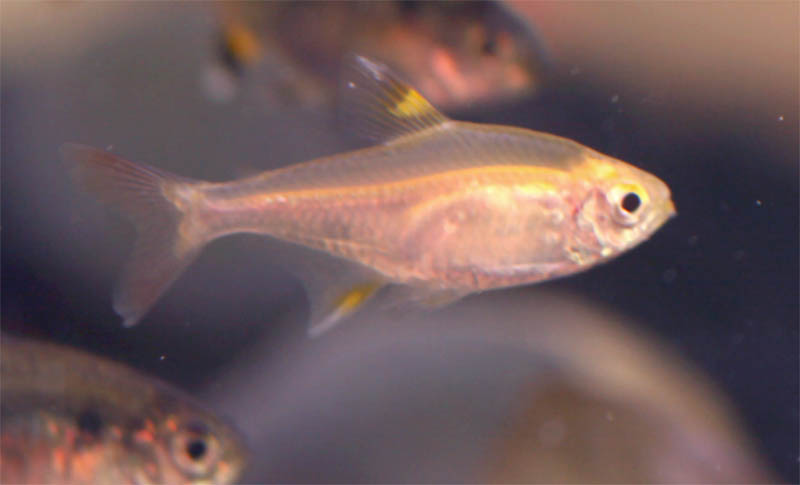
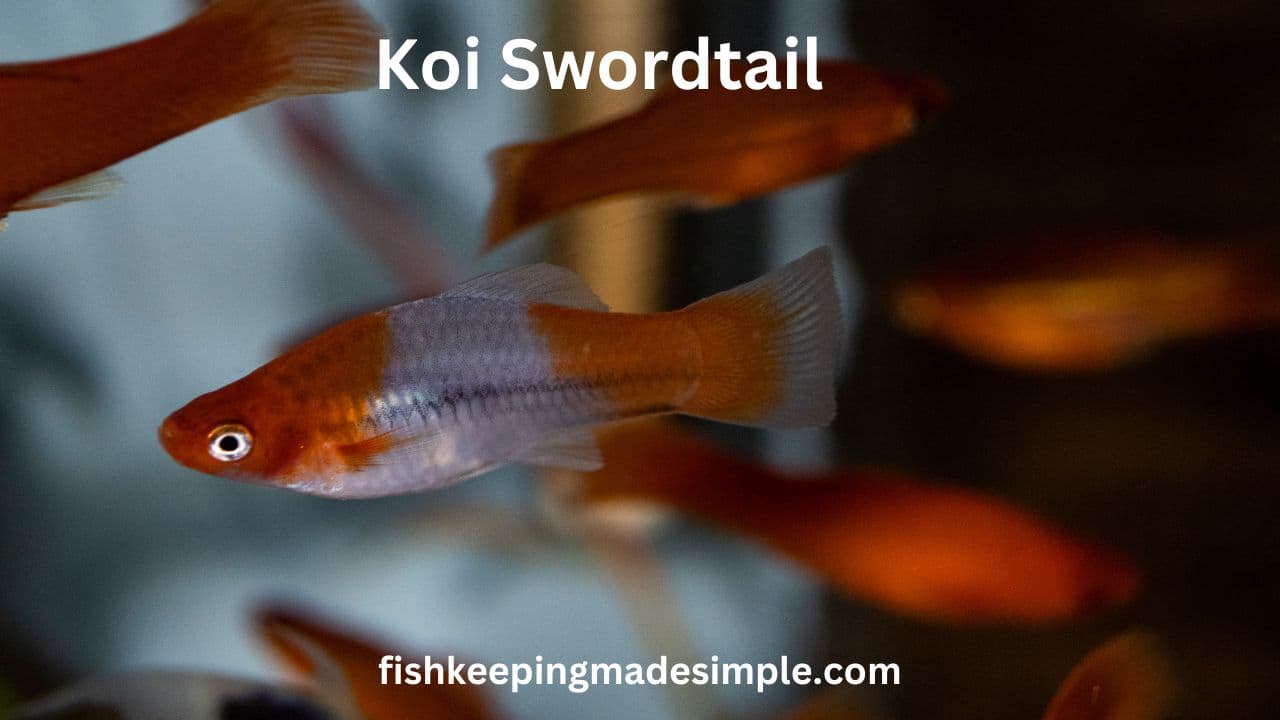

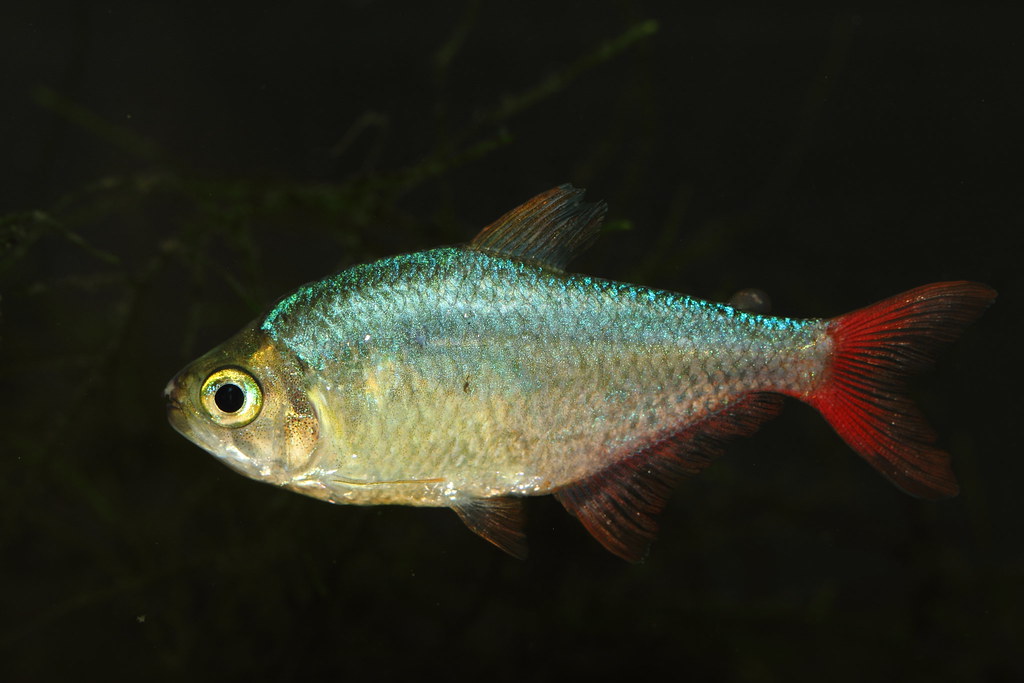
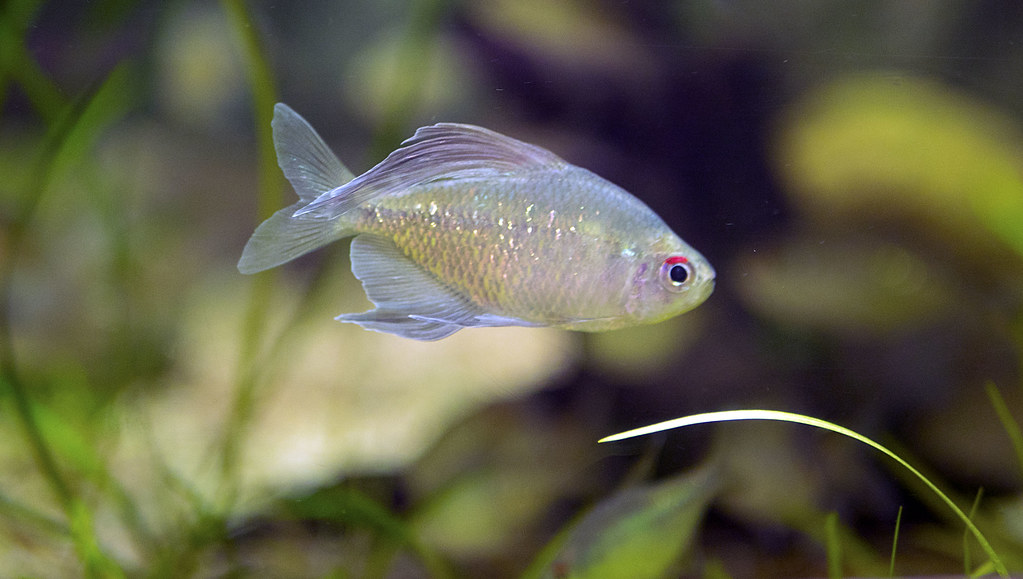
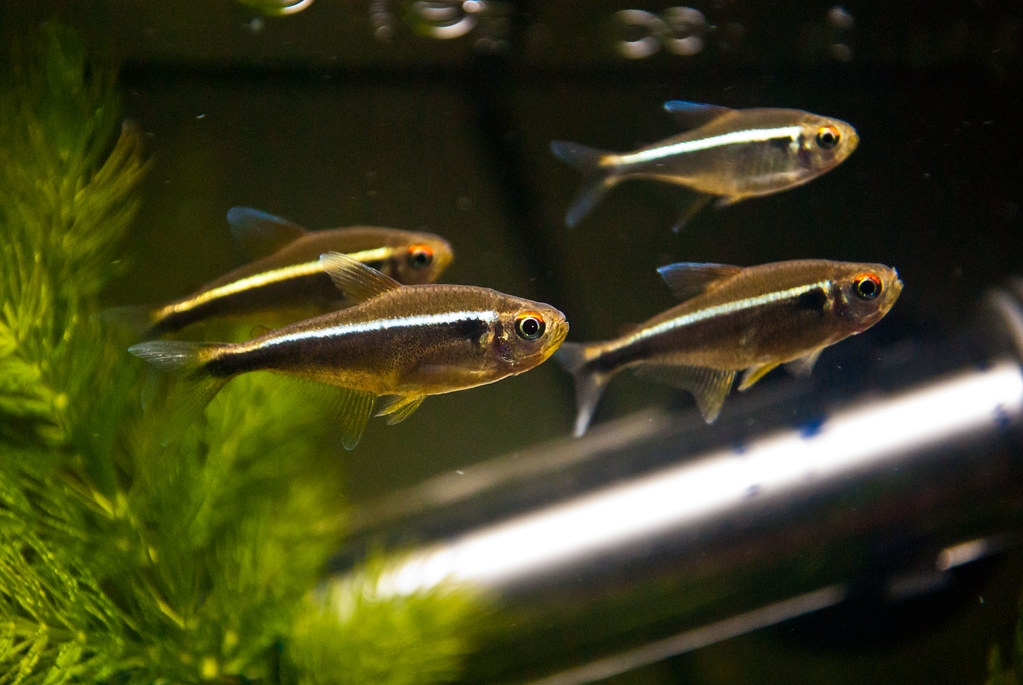
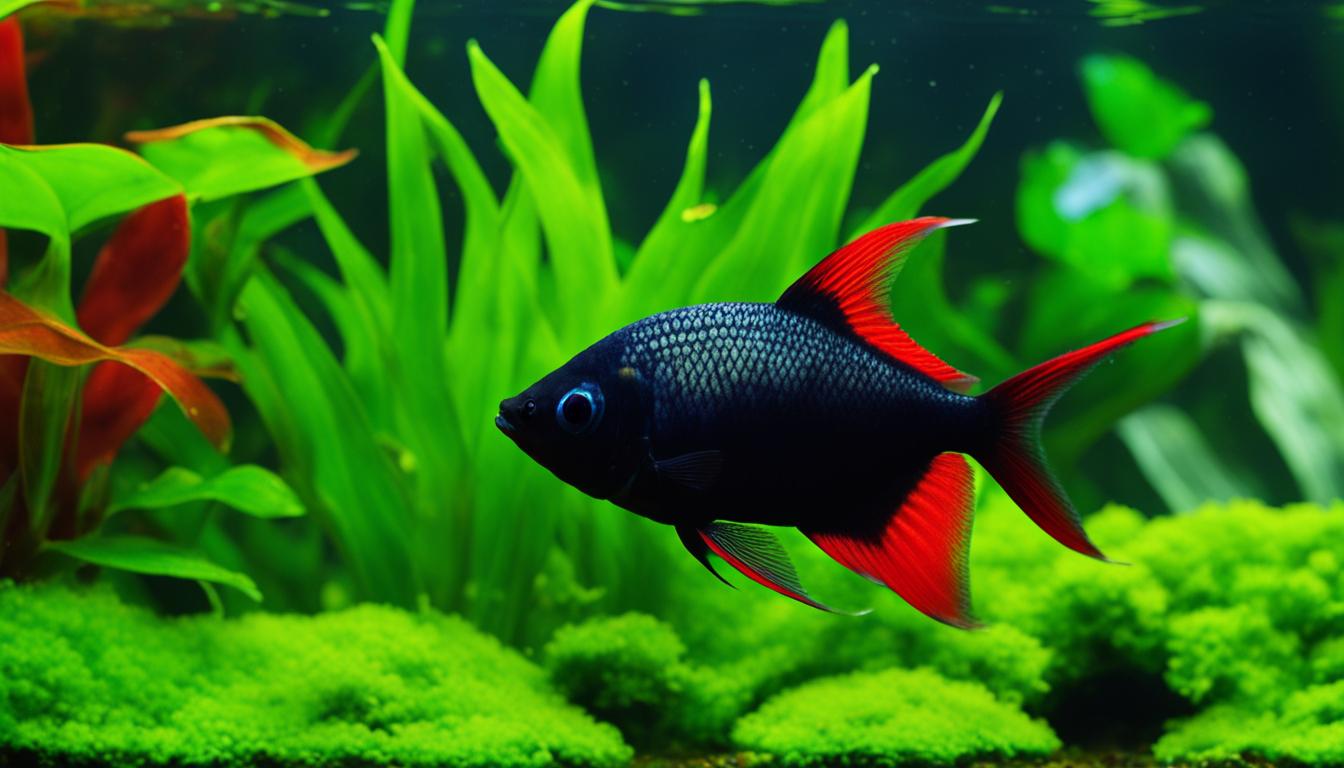
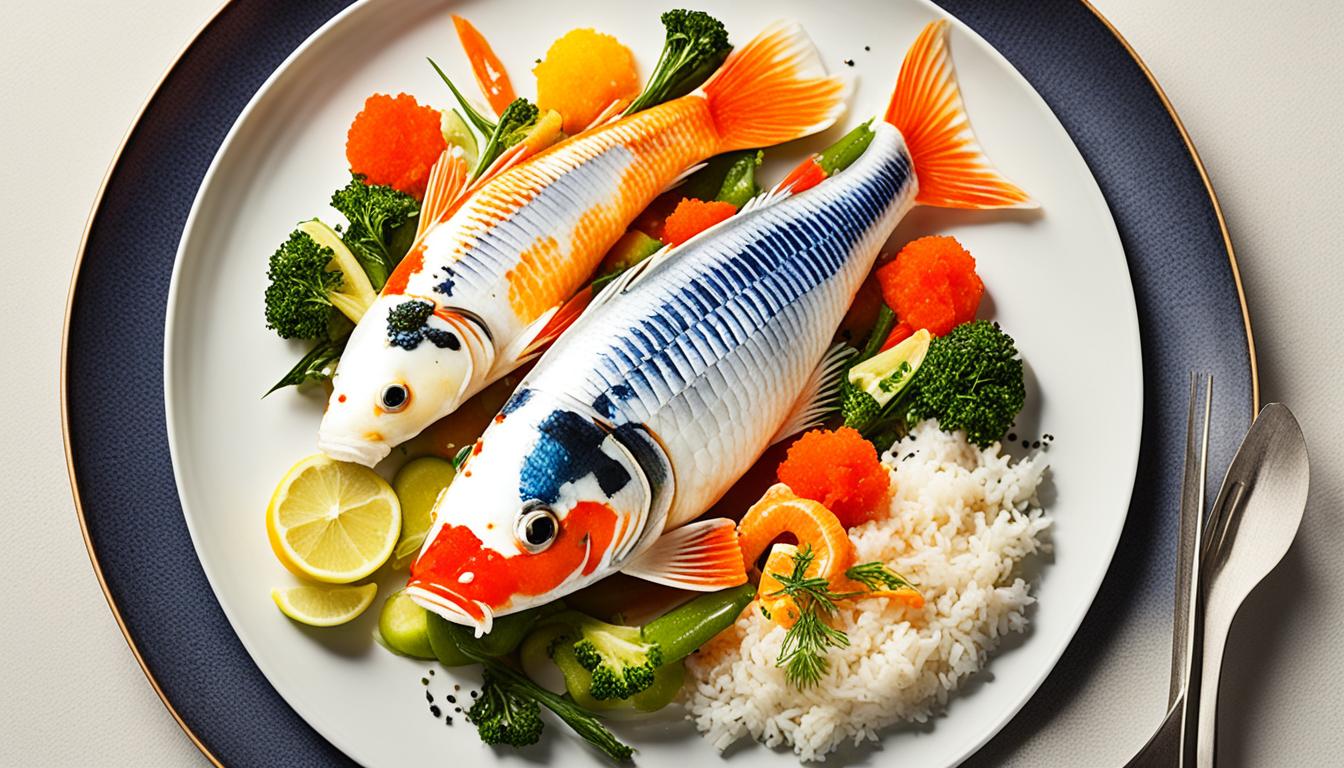
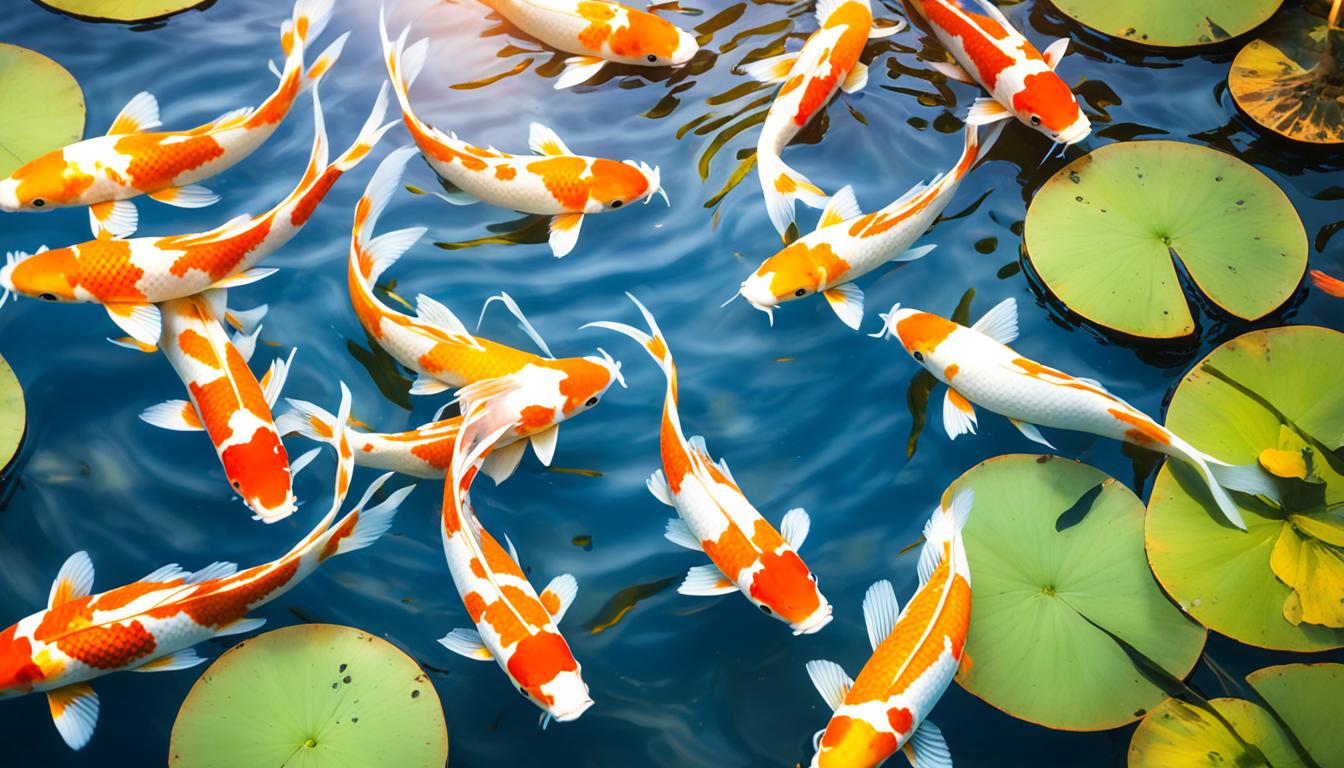
[…] care and maintenance are crucial for the success of this unique aquarium […]
[…] in an aquarium? Growing hair grass in an aquarium is relatively easy with the right care. Start by choosing a suitable substrate and providing adequate lighting for the plants to thrive. […]
[…] to always monitor the behavior and health of Tetra Blue Kings and their tank mates to ensure a happy and harmonious aquarium […]
[…] Platy fish can thrive on a varied diet of tropical flakes, freeze-dried or frozen foods, and vegetables. Their compatibility with shrimp and bettas can create captivating and harmonious aquarium setups. […]
[…] varieties, and natural habitat of White Tetras is crucial for providing them with the proper care and ensuring their well-being in a home aquarium setup. With their striking white coloration and […]
[…] the behavior and personality traits of Electric Blue Acaras is crucial for providing them with an optimal environment in your aquarium. These beautiful […]
[…] the stems into the substrate or let them float freely. Overall, hornwort is a great addition to any aquarium setup, enhancing both the aesthetics and the health of the aquatic […]
[…] White Skirt Tetra’s behavior is fascinating to observe in an aquarium. They are peaceful and active swimmers, constantly exploring their environment. These tetras also […]
[…] level of expertise. But worry not, for I am here to guide you through the various aspects of black ghost knife fish care, from setting up their tank to understanding their behavior and breeding habits. By following […]
[…] this comprehensive guide, I will provide you with everything you need to know about caring for clown loaches in your aquarium. From setting up the perfect tank to understanding their size and finding suitable tank mates, […]
[…] the behavior of your Zebra loaches is essential for keeping them healthy and happy in your aquarium. Despite their small size, Zebra […]
[…] essential guide to Discus Fish care. In this section, I will guide you through the unique needs of Discus Fish so you can provide them with the best possible […]